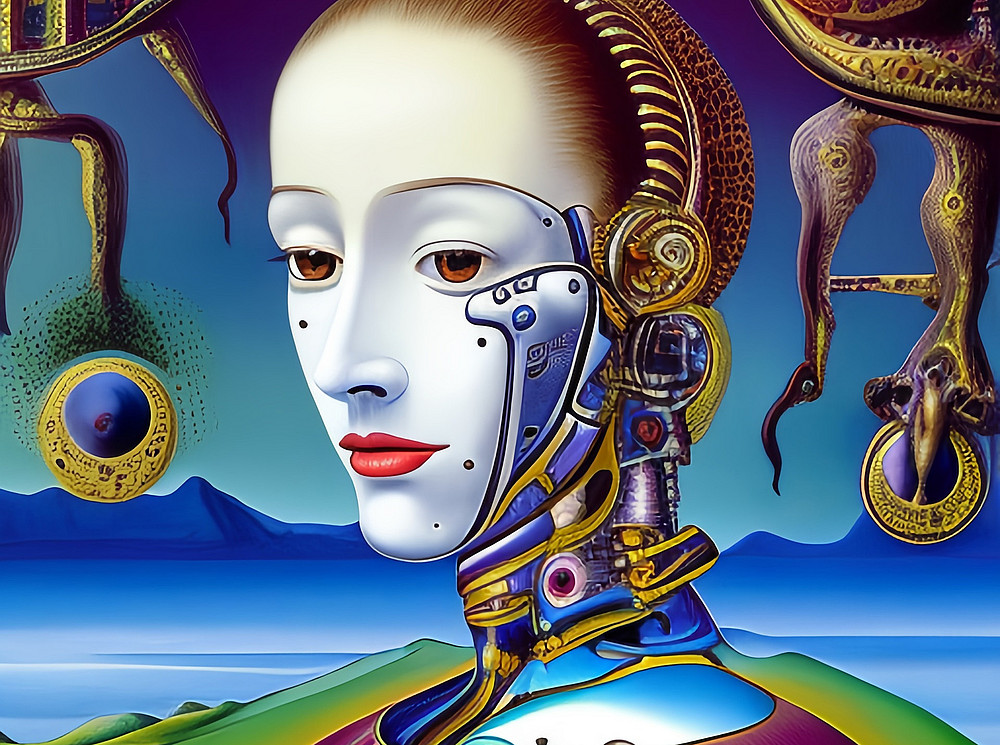"We need to think about artificial intelligence in education"

Artificial intelligence - especially in the form of large language models such as chat GPT - is easily accessible to anyone and everyone. But this is not without consequences. The more easily accessible information is, the less inclined we might be to develop expertise. And the more of it we actually need. In this interview, Manuel Ninaus from the Institute of Psychology at the University of Graz talks about the opportunities that AI holds for us and how we can integrate it into teaching in a worthwhile way.
You recently published an article - together with several co-authors - in the renowned journal "Educational Psychology Review", in which you discuss the potential and challenges of AI in education. What problems do you think are associated with students or adults using AI tools such as chat GTP?
MANUEL NINAUS: We have looked specifically at the use of generative AI, i.e. AI that generates texts or images, for example, after a prompt is entered. Such tools are easily accessible - especially because they are free of charge. However, as we know, generative AI tools not only generate content that is true, but the tools also like to hallucinate. In order for users to be able to identify what is hallucination or false information and what is not, they need a certain level of expertise. Only then can they use these tools effectively. The danger lies in the fact that, as a user, I quickly rely on the content being correct because it sounds plausible. I run the risk of falling for the fallacy that I don't need any expertise. And in doing so, I deprive myself of the opportunity to build up expertise, and therefore the joy of doing so. This is precisely the challenge.
Can you give a specific example of such expertise?
That depends on the discipline. For example, there are methodological textbooks. I have to read these in order to understand the method. To be able to apply the method, I have to practise it. And I need a certain amount of motivation to practise. But if the AI serves me the same content on a silver platter, I lose the motivation to practise.
But isn't it also an advantage if you can save yourself certain work steps with the help of AI? Doesn't this make room for more important tasks?
This leads to the question of which teaching content you want to keep at all. Certain things can of course be outsourced to AI. In statistics, you used to have to determine the P-value manually, which was very time-consuming. Today, this is no longer necessary as there are special tools for this. However, you still need the necessary expertise to deal with the P value. And you need to be aware that you have to have this expertise.
What does this mean for the teaching context?
At the moment, it is difficult to assess what the prospects are for the educational context because these tools are still far too new. In any case, these technologies are unstoppable. There is no point in banning them or controlling them from the outside. Instead, we need to think about how best to integrate them into the classroom.
What possibilities do you see for integrating AI into the classroom?
We believe that we should motivate people to practise and build up knowledge so that they develop the necessary expertise. One possible way is through play. Games are suitable for fulfilling important psychological needs - such as competence, social involvement and autonomy. Experiencing these three things increases motivation. In addition, Richard M. Ryan's self-determination theory - he is co-author of our article - states that intrinsic motivation is extremely important for learning. And intrinsic motivation means that you like the activity in question and enjoy doing it. A game environment can bring all these points together very well if it is well designed. Games are well-designed if they offer different solutions and if they provide good feedback, i.e. if they fulfill all of the aforementioned needs of the players. In such games, learning itself becomes a reward.
Games are also a "safe space", i.e. a safe space in which users are allowed and even required to make mistakes in order to learn. Practicing is perceived as much more motivating in a playful setting and players also take it more positively. Long-term engagement can also be maintained for longer by playing games - learners engage with a task for longer if it contains game elements than if it does not.
Are there any games that meet these requirements?
Minecraft is a prime example of a successful game. The game was originally intended as an entertainment game, but was then taken up by the education community, for example, and modified to be used to teach science. Calculators have also been programmed and the world of Lord of the Rings has been recreated. And then you see all these positive things and ask yourself: why don't we see this more often in schools?
Why is that actually the case? Why don't we see this more often in schools?
It's because the development of a game is extremely cost-intensive and it's extremely difficult to develop a good entertainment game. And if you think about educational games in particular, it's even more difficult. In this area, low-budget solutions tend to come into play. In addition, on a socio-cultural level, the potential for learning through games is often not so highly regarded. Books are simply more accessible to schools than educational games.
What can be done to counter this? How can AI be meaningfully integrated into the classroom?
We believe that the use of AI in the classroom is a great opportunity. But we need a new pedagogy for artificial intelligence. Game-based learning in particular offers many opportunities to counteract the challenges that AI presents us with in an educational context. Learners can be motivated to develop and practise expertise. They can be motivated to develop better games. Certain tasks can be outsourced to AI - for example, the graphic design of the game interface for an initial version of the game. The AI may not provide a perfect solution, but it certainly provides one that can be demonstrated. This means that a solution that is attractive to learners can be found more quickly. This method also involves a learning experience, because in order to achieve this, you already have to deal with the processes - and build up expertise.
Pupils or students, but also teachers, can also use AI to modify and gamify their own learning materials (gamification and playful learning). By interacting with the LLM, ideas can also be developed and implemented more quickly. However, in order to make good use of these systems, you need to build up the relevant expertise. Game-based learning is one way to do this.
What prerequisites do teachers need to be able to implement this vision? How much expertise do they need?
It would be important that not only the infrastructure is provided, but that the topic is already anchored in the training of teachers. The aspirations are basically there among teachers, but many don't know how to implement it. When it comes to implementing educational games, as a teacher I can outsource certain things to AI. This enables a learning experience in the course of game development through easy interaction with the AI. However, this requires me to think about what I actually want to teach. AI helps to take shortcuts, but of course teachers need to be open to these tools.
How do you think AI and LLM will affect teaching?
We are forced to change because AI tools are here to stay. The low opportunity costs mean that they are also being used. Now we need to think about how LLM can be used in the classroom and how it can be integrated into the curriculum. Perhaps it would make sense to focus less on the product and more on the process when assessing performance in the future. This is more difficult and more time-consuming. But the good thing is that AI in combination with machine learning can also help teachers here.



